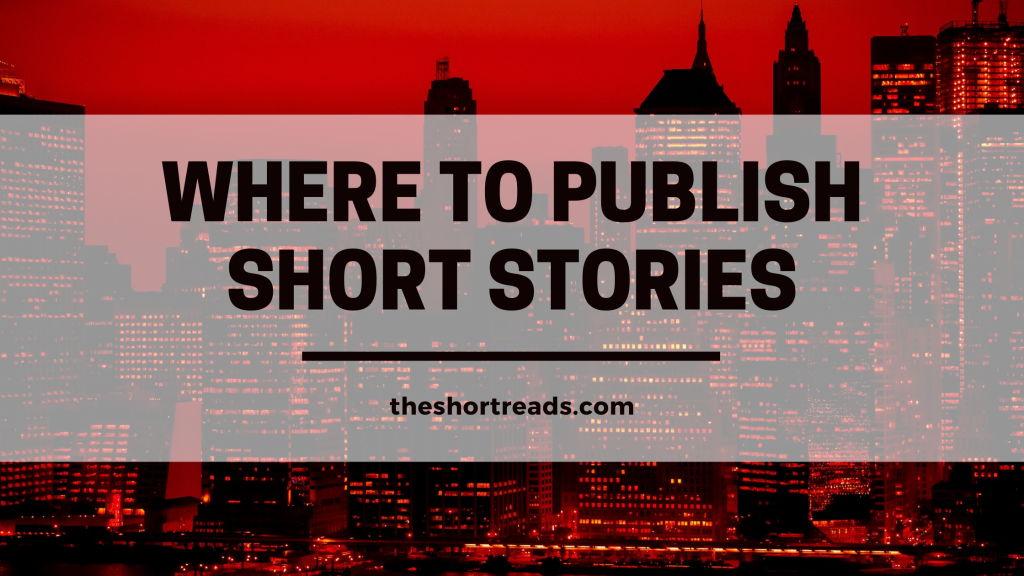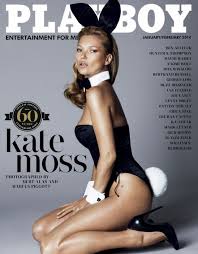Where To Publish Short Stories

Where To Publish Short Stories
If you want to publish short stories, there are many different ways to do so. You can submit them for publication in literary magazines or with publishing houses that specialize in shorter works. Short story collections are also a way to get your work out into the world and increase your chances of being discovered by an agent or publisher who might like what they see. So where should you publish? Read on!
In this post we outline:
1. The best places to publish short stories
2. Pros and cons of each place
3. What you should consider before publishing your story
4. Do your research before deciding where to publish your story
5. How much does it cost to publish a short story online, in print, or both
6. Tips for writing a great short story that will get published!
The best places to publish short stories
There are many places to publish short stories. Some pay, others do not, but every one of them is an opportunity for you to get your work read, reviewed, and discussed by critics and readers alike.
1. The New Yorker
The New Yorker has published some of the most celebrated works in America since its inception in 1925.
If you get a story published there, it will be read and talked about for years to come. In addition to publishing work from some of the most celebrated writers alive today, they also accept submissions from emerging authors.
They have a rigorous selection process that takes place throughout the month so you need to expect a long wait before hearing back from them—if you are accepted, you will be asked to join their contributor’s stable.
The pay is good too at $200 for original fiction.
2. Tin House
Tin House is a small literary magazine that accepts stories, flash fictions, and novel excerpts from emerging writers who have not yet been published in any other major magazines or book publishers.
They pay $100 for short stories and up to 3,000 words, as well as publishing a number of flash fictions per year.
They also feature emerging novelists on their website from time to time. You can find many Tin House contributors’ work in other magazines as a result of being published here first.
3. The Paris Review

The Paris Review is one of the most famous literary magazines in America. It features stories and poems from emerging and established writers alike, as well as book reviews and interviews with prominent figures in literature such as Salman Rushdie and Junot Diaz.
Their pay scale for fiction is $0.25 per word up to a maximum of $250 (sold to one of their many international publishing partners). You can expect to hear back from them within 6-8 weeks.
4. Ploughshares
Ploughshares is another of the most respected literary magazines in America, thanks to its New England pedigree and circulation at prestigious universities around the country.
They pay $50 per printed page up to a maximum of $300 for first time authors and offer a generous discount to return contributors.
They publish a number of poems as well as short stories, but their selection process is notoriously slow—you can expect to wait around 9 months to hear back from them if you’re accepted.
5. The New York Times Sunday Magazine

The New York Times magazine recently announced a short fiction contest open to all writers, with the winner receiving $15,000 and publication in the magazine.
There is no hard word count for this contest but they want stories between 2-5 pages in length (about 1200-1800 words). This is an excellent opportunity for emerging authors who lack a literary agent or book publisher to get their work published.
6. Playboy Magazine
Playboy, like The New Yorker, is an iconic fixture in American culture and literature (after all, they featured short stories by Jack Kerouac and Haruki Murakami).
They pay $3000 per story for original fiction—which is more than most book publications will offer you!
They also feature several short stories per year—both original works and reprints of popular stories from other magazines.
If you are one of the few authors who make their final round, your story will be forwarded to Playboy’s editors for consideration.
7. The New York Times
The New York Times is another publication that offers a short fiction contest for emerging writers, but the contest is open to all writers over 18 years of age (no matter where you live).
The winner receives $15,000 and publication in the New York Times Magazine. They also offer a number of opportunities for published authors to write short pieces for them as well–which will pay $300-$1000 depending on how long they are.
Pros and cons of each place:
Tin House has one of the quickest response times from submission to acceptance or rejection, but their pay scale is relatively low compared to other magazines on this list.
The Paris Review gets a little more complicated because they have a strict 3 month wait time before you can submit again and they only accept submissions through an agent or by post—which means you have to physically mail your story to them if you aren’t a US citizen.
Ploughshares tends to have a much longer wait time but they pay the highest rate of all the magazines on this list ($50 per printed page) as well as offering a generous discount for reprints and first-timers.
The New York Times magazine offers a wonderful opportunity for emerging writers to get their work published but they only accept submissions through an agent or by post (so it’s not open to everyone).
Playboy is one of the best paying markets on this list, but you must be over 18 (no matter where you live) and be willing to write under your real name.

The New York Times is also a wonderful opportunity for emerging writers to get their stories published but they only accept submissions through an agent or by post (so it’s not open to everyone). The pay scale isn’t as high as Playboy but you have better odds of being accepted.
A place only accepting submissions from agents or by post makes me nervous because that means they don’t want your work to be judged by anyone other than their editors. This makes me think that maybe the pay isn’t worth it–and you’re only wasting your time if you take the risk.
What you should consider before publishing your story
The acceptance rate for The Paris Review is well below 1% and Tin House is only slightly better. If you’re trying to get your story in print for the first time, you probably shouldn’t start with either of these magazines.
I would recommend sending your story to less competitive markets if it’s been rejected or ignored by 5 other places before sending it to Tin House or The Paris Review.
1). That you are not on the list of finalists for another publication (no matter how little money they pay) until after the contest is over.
2). That your story will be printed anonymously if it makes the final round and published in the New Yorker, Playboy, or The Paris Review.
3). That the editors reserve the right to publish your story online or use it for any other purpose that may arise in the future (including publishing it again in another magazine without notifying you).
5). The specific rights they are purchasing (worldwide English, digital, post-print…etc)
6). If you can submit again if you are unsuccessful the first time.
7). How soon after they are notified of their finalist status they must submit their story.
8). If your story will be forwarded for consideration for any other publications or part of a contest that is still accepting submissions.
9). What happens to your submission if you withdraw it from consideration.
Do your research before deciding where to publish your story
I know what you’re thinking. “I don’t want to miss out on getting my story published!”
But honestly, even though each of these magazines all have one or more things going for them than the others–they all cost you time and effort if they reject your work.
There is also no guarantee that the other finalist stories won’t be picked over yours and you won’t win the contest.
It may seem like a no-brainer that if your story is selected as a finalist then it must be the best of the bunch but that isn’t necessarily true. Editors often like to shake things up and pick stories outside of the genres they usually publish (like choosing a nonfiction story in a fiction contest).
There is no harm in submitting your work to more than one publication at once or waiting until you get an acceptance before publishing–as long as you don’t tell the other publishers that’s what you’re doing.
So…if you can wait and if it doesn’t cost anything to submit, there’s no reason not to send your story out as many times as you want.
Just remember, the more places you try and publish your work, the longer it’s going to take to see if it gets published anywhere.
How much does it cost to publish a short story online, in print, or both?

If you’re lucky, free.
It’s possible to get published for nothing but it may take a lot of time and effort. Self-publishing is great because then you don’t have to pay the fees that publishing magazines charge or worry about being paid by anyone.
You can always try to sell your self-published work later if you don’t want to do the work yourself.
If you’re not sure how much it will cost, just ask–the worst they can say is “no.”
Tips for writing a great short story that will get published!
Tip #1: Don’t write about sex, drugs, or rock and roll. Think literary fiction or a literary memoir.
Tip #2: Write something that doesn’t have an obvious moral lesson. Anti-heroes are cool but not as cool as ambiguous endings. If you can avoid it, don’t have your character learning a life lesson at the end.
Tip #3: No narrators, no dialogue tags, and minimal action. A really good way to avoid a plot is to have a first-person account of someone going on a walk. Memories are great too–because they can’t really do anything except remember something that happened to them in the past.
Tip #4: A great way to make your story longer is to have it be about nothing. A lot of people do this by making the setting more important than the actual characters or action in a story. Since characterization is really hard, you can trick readers into thinking they’re getting a well-developed character by having them interact with lots of objects and places.
Tip #5: No poetry! Poetry is something you read at a reading (see above) and it’s not really considered “literature.” If you write in verse, most publishers will print it but they’ll stick your name in the fine print somewhere and none of the cool kids will know that it’s yours.
Tip #6: Make sure your story is under 2,500 words long. There are some magazines that might publish up to 3,000 words but honestly–anything over that and you’re just wasting trees.
Tip #7: If you write about death or class issues, make it really easy on everyone involved–including yourself–by not going into any detail. All you need is a quote from a dead guy and a token person of color or some kind of “outsider.”
Tip #8: No humorous stories! Humor isn’t really taken seriously so if you’re trying to get serious literary cred, skip the jokes.
Tip #9: Most short story contests aren’t worth entering. You can win a contest and it won’t get your work published at all or you can get a publication to buy your story for money–and that’s the only place they’ll publish it. S
ome small magazines might include a contest as part of their submission process but none of them are big enough to get you anything more than bragging rights.
Tip #10: If someone says that they don’t want to publish your story because it isn’t right for their magazine, that doesn’t mean they hate you and/or your writing–just take it as a compliment and send it off somewhere else.
Conclusion

There are many places to publish short stories, and it’s up to you which one is best.
But for the sake of time and effort, we recommend publishing your story on Amazon Kindle Direct Publishing (KDP), Wattpad or Scrivener.
These sites enable you to write a story in chunks while still keeping an audience engaged with new episodes; they also offer detailed analytics that will help you see what parts of the story resonate most with readers. If you’re not ready to self-publish yet, there are plenty of other options out there – just do some research first!
We’ve outlined the best print options for you above. Check them out
Have you claimed your two free books yet?
Share